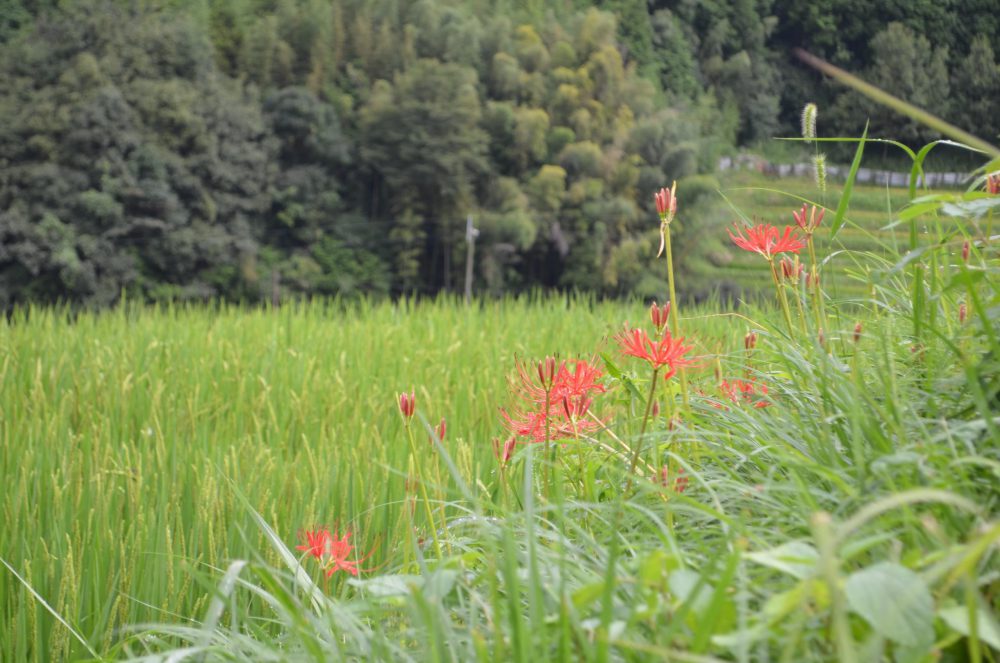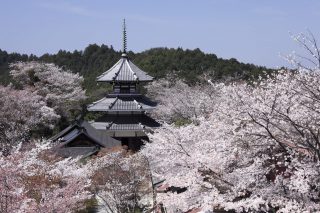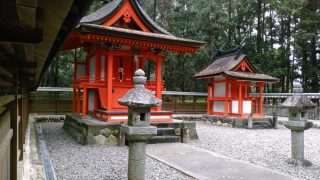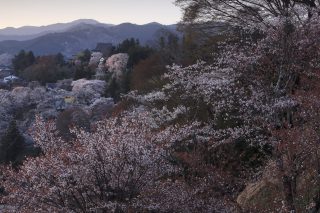Why is the concept of love so attractive to people?
Throughout history and in all sorts of literature, people around the world have written stories on the subject of love.
Stories of passion, torn hearts, gentleness, and heartbreak, to name a few.
Love comes in various forms, but sad love stories seem to have a special effect on us…
As people have been active in the Yoshino area since ancient times, such stories of love have also appeared over the years.
In this article, I would like to introduce a love story about Lady Ben-no-naishi, which took place in the Ryumon area of Yoshino about 700 years ago.
—
Emperor Go-daigo, who established the Southern Dynasty in Yoshino, died leaving these words behind:
“Even if my body is buried in the moss of Yoshino, my soul is always looking for the sky of Kyoto. If you go against my command and disrespect humanity and justice, you are neither my successor to the Dynasty nor my loyal servant.”
The following story takes place a little after his death.
Lady Ben-no-naishi spoke with Emperor Go-murakami, the successor to Emperor Go-daigo.
“I’ve been serving the Imperial Family so far, but from now on, I want to spend my life wearing a black robe, holding this feeling of disappointment and sadness in my heart.”
After listening to the words, Emperor Go-murakami accepted her proposal, perhaps as if her heart had spoken directly with his own.
Ben-no-naishi cut her shiny black hair that she loved, buried it on the grounds of Nyoirin-ji Temple, and then left Mt. Yoshino.
After that, she spent every day praying a Seini-an(聖尼庵) t Hermitage as a nun in Ryumon.
To pray in front of Buddha, the mind must be calm, but everytime she closed her eyes she thought of Emperor Go-murakami and tears unconsciously fell from her eyes, wetting her face.
I will now tell the story of why she decided to become a nun.
In the time when Emperor Go-daigo still lived, Ben-no-naishi was approached and nearly kidnapped by Moronao Kouno, the servant of Takauji Ashikaga,
Moronao was known as a womanizer, but she never thought he would attack her as she was a lady in high standing.
At that time, the man who saved her from being kidnapped was a warrior by the name of Masatsura Kusunoki who possessed such strength that it reassured her greatly.
Some time after this event, Emperor Go-murakami spoke with Masatsura and told him that he should consider marrying Ben-no-naishi.
Unlike Ben-no-naishi, who was flustered upon hearing the suggestion, Masatsura clearly refused the marriage suggestion, saying “I know that I have not much longer to live. How could such a fleeting marriage work?”
Shortly afterwards, Masatsura headed for the battlefield.
Pushing back the enemy forces of the Ashikaga army at Fujiidera, Tennoji, and Kyoto, Masa-tsura enjoyed consecutive victories.
However, the military might of the Ashikaga was great and they eventually struck back with a
a massive army, led by Moronao Kouno, attacking the forces of Masatsura directly.
Receiving the news that Moronao Kouno was personally heading into battle. Masa-tsura ignored the pleas of Emperor Go-murakami and Ben-no-naishi, who wished for him to return to Yoshino safely, and instead headed to Shijo-nawate where the enemy awaited. At this time, he left a poem at Nyoirin-ji Temple:
“I know I cannot return home. I’ll write down the names of those who are headed into battle and face inevitable death.”
Soon after, Emperor Go-murakami and Ben-no-naishi received a report that the forces of Masatsura were defeated by those of Moronao Kouno, although he put up a heroic fight.
Moreover, they were told that Moronao’s next goal was to attack Mt.Yoshino directly.
Ben-no-naishi could not stand this horrible news and told Emperor Go-murakami that she wished to become a nun from that moment forward.
For the rest of her life, Ben-no-naishi continued to mourn for Masatsura.
The location of Seini-an(聖尼庵) Hermitage, where Masa-tsura spent the remainder of her days, is said to have been either at Ryumon-ji Temple or Sairen-ji Temple, but is still not known for certain.
As it happens, this story, from its beginning to its end, is not even fully recorded in the “Taiheiki” chronicle.
So this begs the question, is this story fact or fiction? If it is a true, where is Seini-an(聖尼庵) Hermitage’s actual location?
Nobody knows the truth.




